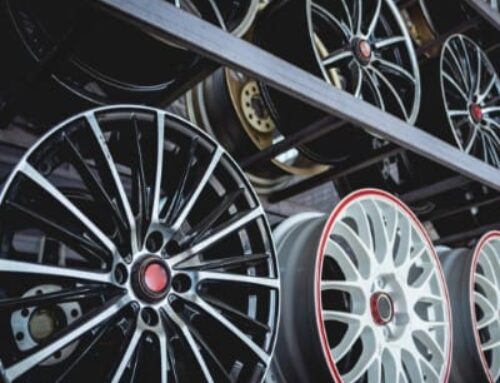Does Offset Affect Fitment?
When it comes to customizing your vehicle’s wheels, one term that often comes up is “offset.” But what exactly is offset, and more importantly, does offset affect fitment? In this article, we’ll explore the relationship between wheel offset and fitment, and how getting it right can make all the difference in your vehicle’s performance and appearance.
What is Wheel Offset?
Before diving into how offset affects fitment, it’s essential to understand what offset actually is. Wheel offset refers to the distance between the wheel’s hub mounting surface and its centerline. This measurement, typically given in millimeters, dictates how far inward or outward the wheel sits in relation to the vehicle’s body and suspension components.
There are three main types of offset:
- Positive Offset: The hub mounting surface is closer to the outer edge of the wheel. This is common in most modern vehicles where the wheel sits further inside the wheel well, often resulting in a flush or slightly inset appearance.
- Negative Offset: The hub mounting surface is closer to the inner edge of the wheel. This causes the wheel to protrude outward from the vehicle, giving it a more aggressive stance, often seen in off-road or performance vehicles.
- Zero Offset: The hub mounting surface is aligned exactly with the wheel’s centerline, providing a balanced look where the wheel neither protrudes nor is recessed.
Want to dive deeper? Explore our guide on What is Wheel Offset? for more insights!
Does Offset Affect Fitment?
The short answer is yes, offset significantly affects fitment. Here’s how:
1. Clearance Issues
One of the primary concerns with wheel fitment is clearance. This includes clearance between the wheel and the vehicle’s fenders, suspension components, and brake calipers.
- Positive Offset: A wheel with too much positive offset may sit too far inward, leading to rubbing against suspension parts, brake components, or even the inner fender well. This can cause significant damage over time and may require modifications such as spacers or fender rolling to correct.
- Negative Offset: Conversely, a wheel with too much negative offset can stick out too far from the fender, leading to potential rubbing against the fender edges, especially when turning or going over bumps. This is not only a cosmetic issue but can also impact handling and ride quality.
2. Aesthetic Considerations
Offset doesn’t just affect how the wheels fit physically; it also plays a significant role in the vehicle’s overall appearance.
- Positive Offset: Generally results in a more tucked-in look, which is preferred for a clean, factory-style appearance. However, too much positive offset can make the wheels look sunken and reduce the vehicle’s aggressive stance.
- Negative Offset: Provides a wider, more aggressive stance. This is particularly popular among enthusiasts looking to give their vehicle a bold, custom look. However, too much negative offset can make the wheels stick out excessively, which might not be aesthetically pleasing to everyone.
3. Handling and Performance
Wheel offset also has a direct impact on your vehicle’s handling and performance.
- Positive Offset: A wheel with a high positive offset tends to have a more stable and controlled ride, as the wheel sits closer to the suspension components. This setup is ideal for most daily driving scenarios but may not offer the best performance for aggressive driving or off-roading.
- Negative Offset: A more negative offset can improve handling by widening the vehicle’s track, which lowers the center of gravity and provides better grip during cornering. However, it can also increase steering effort and lead to a harsher ride due to the wider stance.
How to Choose the Right Offset for Your Vehicle
Choosing the correct offset is crucial for ensuring proper fitment and avoiding potential issues. Here are some steps to guide you:
- Consult Your Vehicle’s Specifications: Start by checking your vehicle’s factory specifications for wheel offset. This provides a baseline that ensures proper fitment without requiring modifications.
- Consider Your Driving Style: If you prefer a factory-style look and drive primarily on city streets, a positive offset close to the stock specification is ideal. If you’re an off-road enthusiast or enjoy a more aggressive stance, a slightly negative offset may be more suitable.
- Measure and Test Fit: Before committing to new wheels, measure the clearance available in your wheel wells and test-fit different offsets if possible. This helps you avoid any surprises once the wheels are installed.
- Seek Professional Advice: If you’re unsure about which offset to choose, consult with a professional who specializes in wheel and tire fitment. They can provide expert advice and help you find the perfect balance between aesthetics, performance, and practicality.
So, does offset affect fitment? Absolutely. The right offset ensures that your wheels not only look good but also function correctly without causing any issues with clearance, handling, or performance. By understanding the relationship between offset and fitment, you can make informed decisions that enhance both the appearance and functionality of your vehicle. Whether you’re aiming for a sleek, factory look or a bold, aggressive stance, getting the offset right is key to achieving the perfect fitment.






